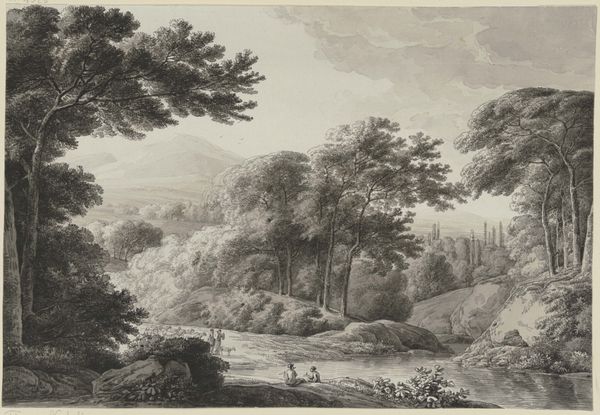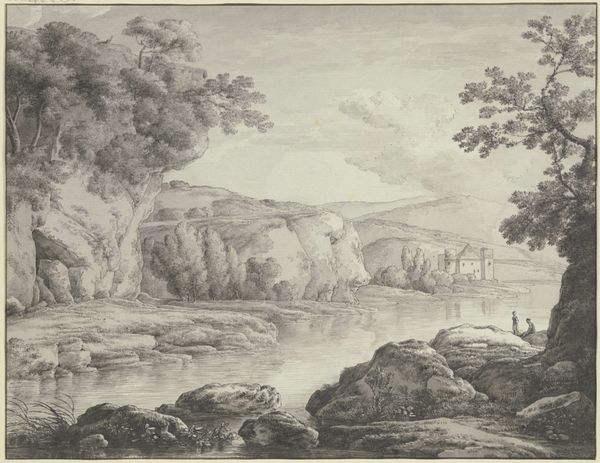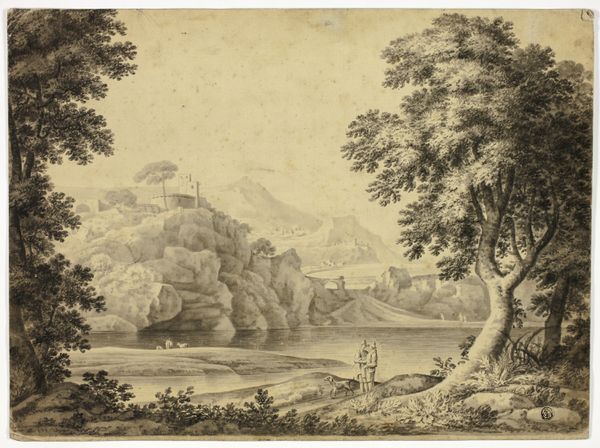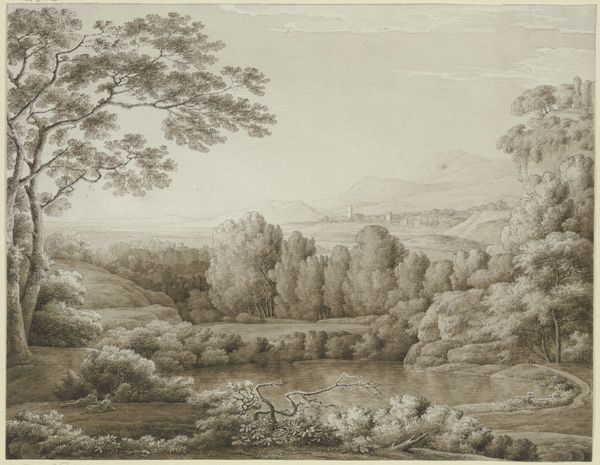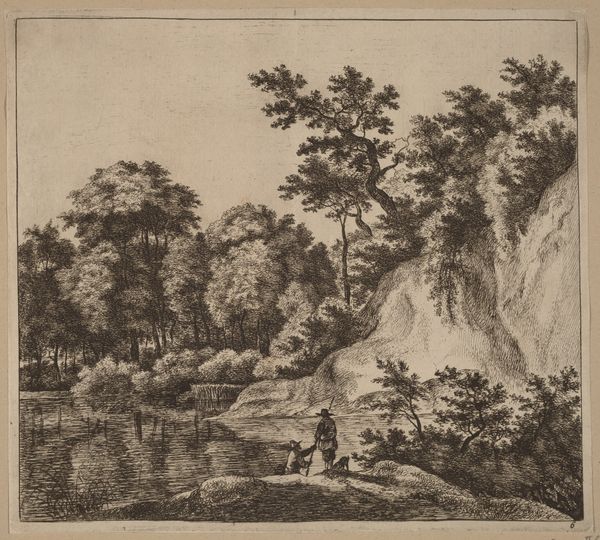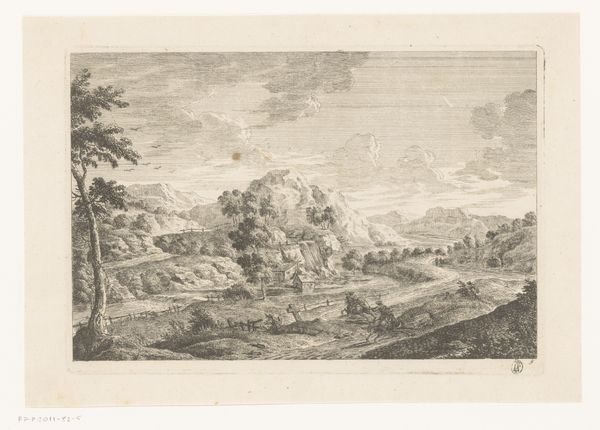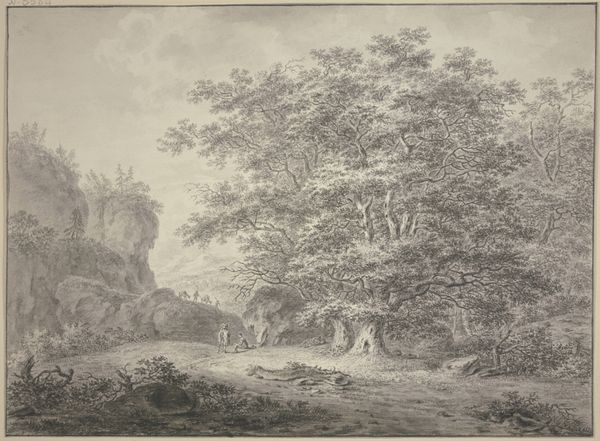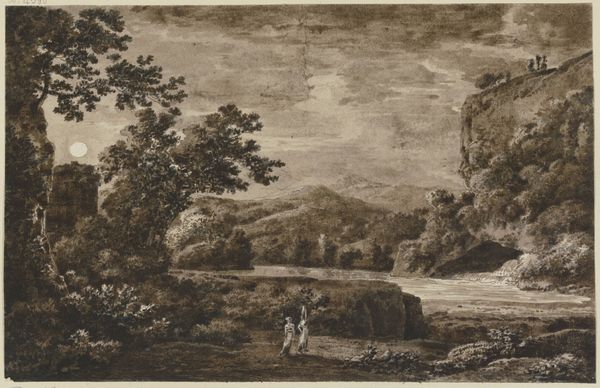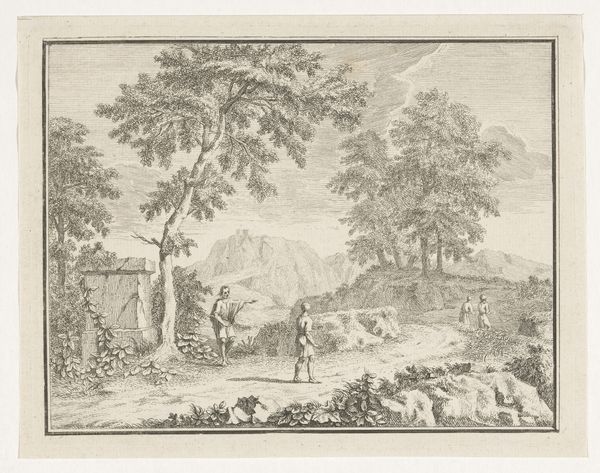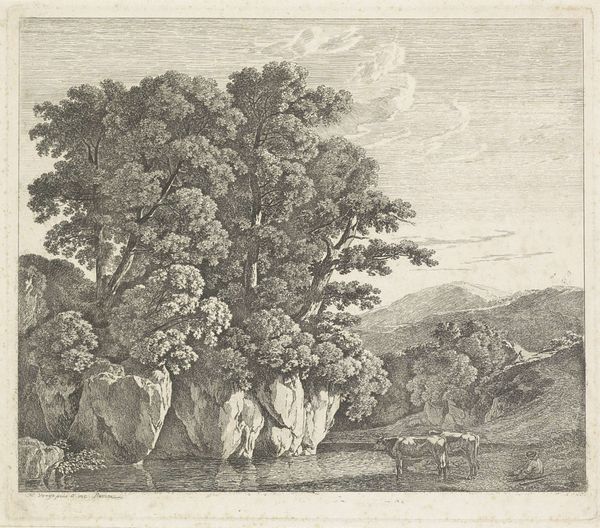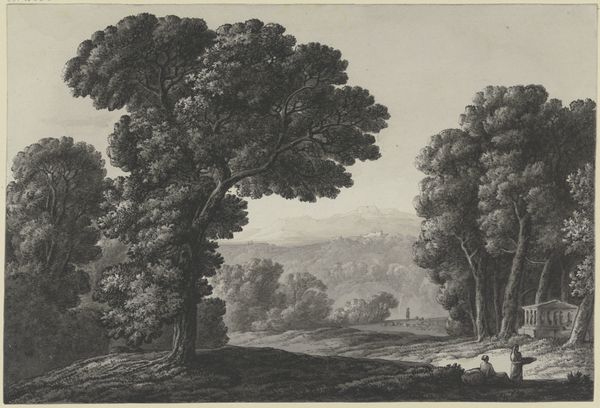
drawing, ink, pencil
#
drawing
#
landscape
#
ink
#
pencil drawing
#
pencil
#
15_18th-century
#
line
#
realism
Copyright: Public Domain
Editor: Here we have Franz Kobell's ink and pencil drawing, "Flußlandschaft mit steilen Felsen," or "River Landscape with Steep Rocks". Although undated, it appears to come from the 18th century. I'm struck by the seemingly ordinary subject matter, yet it evokes a very peaceful, almost dreamlike feeling. What do you see in this piece? Curator: It’s the apparent ordinariness that speaks volumes, doesn’t it? Note how the artist renders the landscape in shades of gray, almost a monochrome memory. This use of a limited palette is symbolic, perhaps referencing a longing for a simpler, pastoral past, a common theme of the era. Consider how the figures are rendered so small, almost insignificant, against the grandeur of the rocks. Do you think this diminished scale has any particular symbolic meaning? Editor: Maybe it suggests humans are just a small part of a much larger natural world? Curator: Precisely. The "steep rocks" are themselves archetypal images—symbols of strength, permanence, and the sublime power of nature. And look closely at the solitary tree; it seems to reach, almost desperately, towards the sky, acting as a connection between the earth and heavens. Think of it as representing humanity’s aspiration towards something higher, almost a yearning for transcendence. Editor: That's fascinating, I didn't see it that way at first! So it's more than just a pretty landscape? Curator: Far more. It is a reflection of the cultural memory of idealized nature, a painted language hinting at universal human desires. By focusing on the symbolism of the land features, Kobell immortalizes both physical location and associated feelings. Editor: I’ll definitely look at landscapes differently now. Thanks for revealing these layers of meaning.
Comments
No comments
Be the first to comment and join the conversation on the ultimate creative platform.
